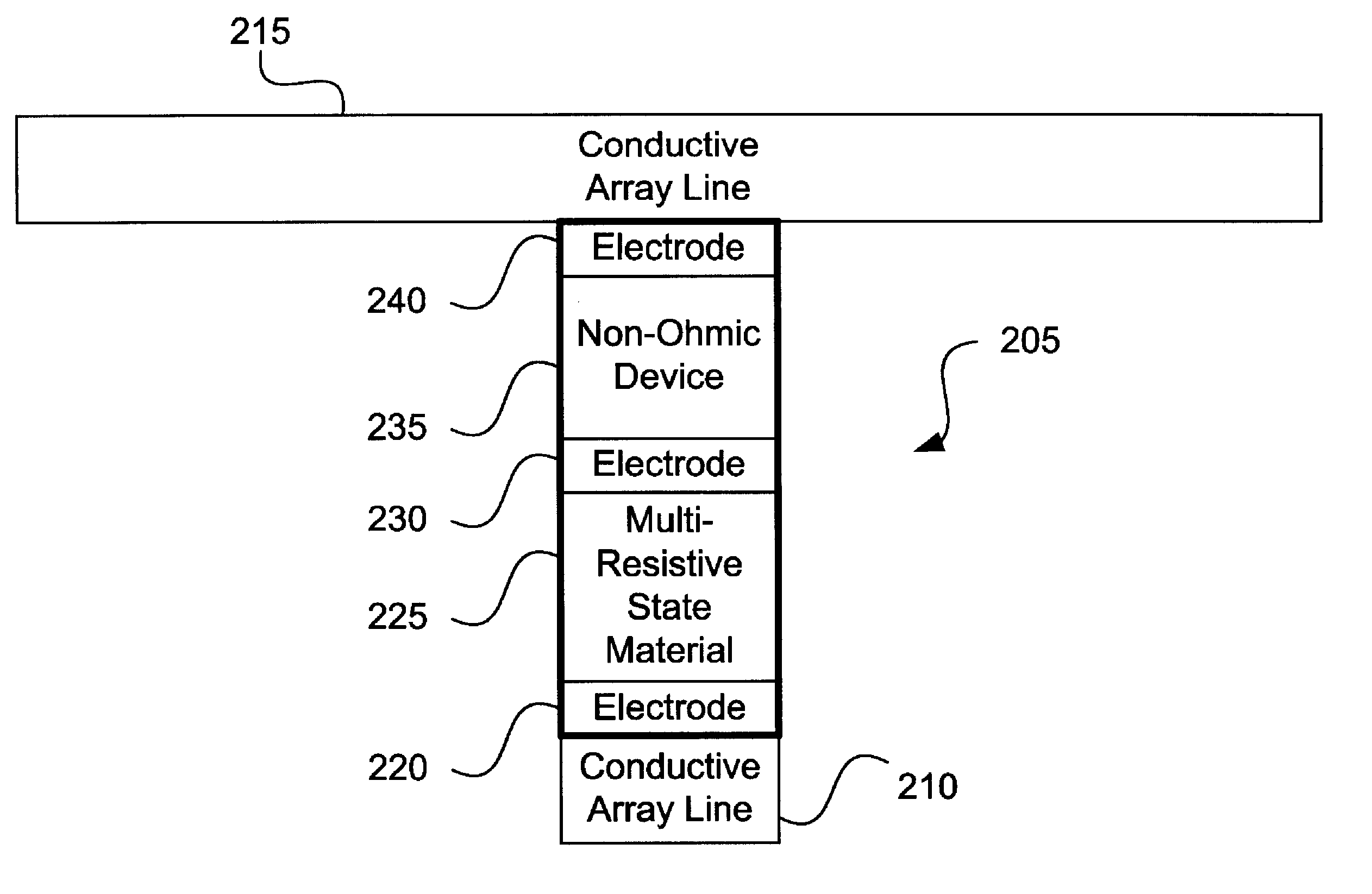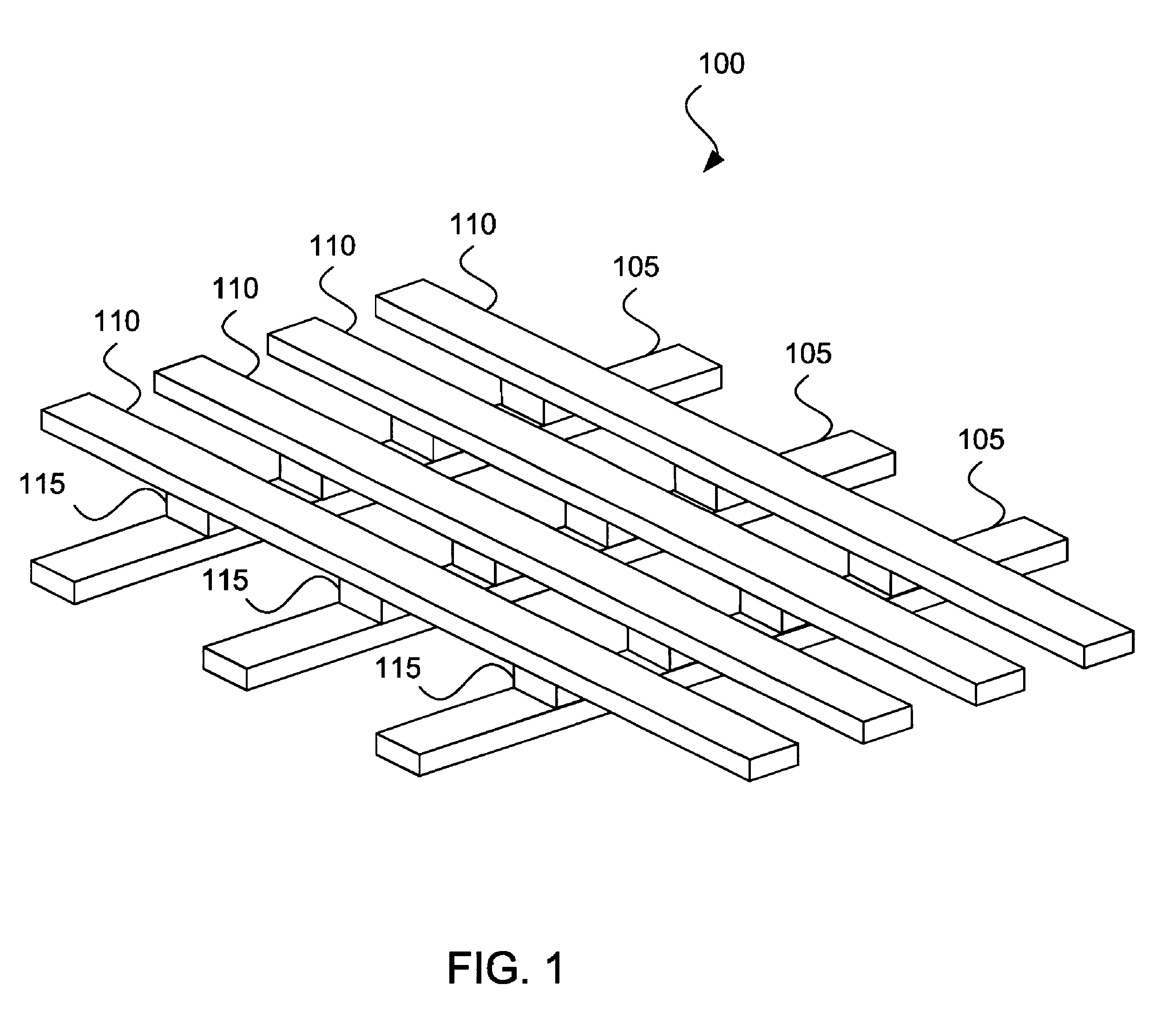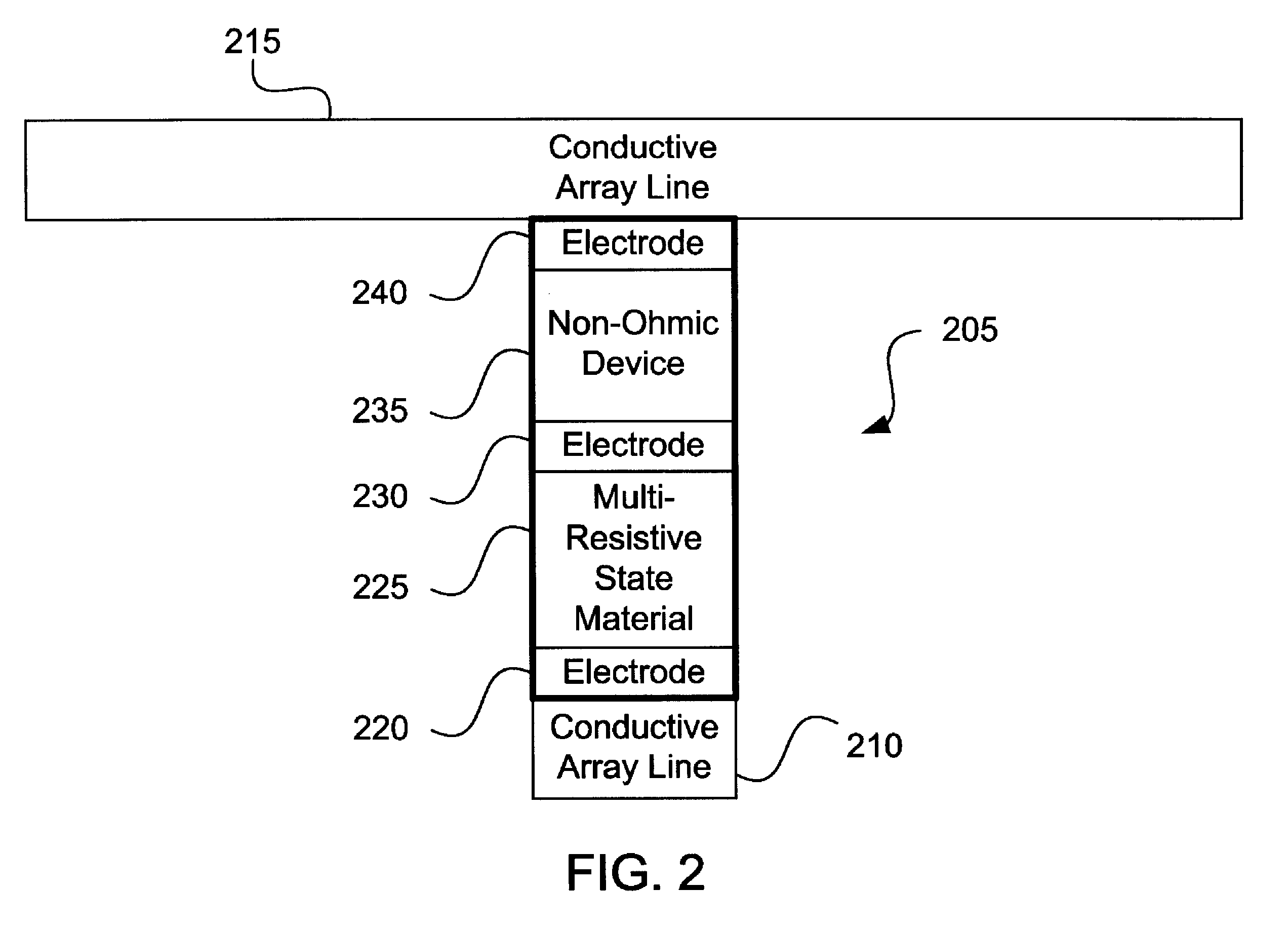Re-writable memory with non-linear memory element
a non-linear memory and rewritable memory technology, applied in the field of memory, can solve the problems of limiting the total size and applications of the memory, requiring a complex refresh algorithm, and non-volatile memory such as flash memory is slower to program
- Summary
- Abstract
- Description
- Claims
- Application Information
AI Technical Summary
Benefits of technology
Problems solved by technology
Method used
Image
Examples
Embodiment Construction
In the following description, numerous specific details are set forth to provide a thorough understanding of the present invention. It will be apparent, however, to one skilled in the art that the present invention may be practiced without some or all of these specific details. In other instances, well known process steps have not been described in detail in order to avoid unnecessarily obscuring the present invention.
The Cross Point Array
FIG. 1 depicts an exemplary cross point array 100 employing a single layer of memory. A bottom layer of x-direction conductive array lines 105 is orthogonal to a top layer of y-direction conductive array lines 110. A plurality of memory plugs 115 are located at the intersections of the conductive array lines, each individual memory plug being capable of being uniquely identified and, therefore, uniquely selected by a single x-direction conductive array line and a single y-direction conductive array line.
Conductive array line layers105 and 110 can b...
PUM
 Login to View More
Login to View More Abstract
Description
Claims
Application Information
 Login to View More
Login to View More - R&D
- Intellectual Property
- Life Sciences
- Materials
- Tech Scout
- Unparalleled Data Quality
- Higher Quality Content
- 60% Fewer Hallucinations
Browse by: Latest US Patents, China's latest patents, Technical Efficacy Thesaurus, Application Domain, Technology Topic, Popular Technical Reports.
© 2025 PatSnap. All rights reserved.Legal|Privacy policy|Modern Slavery Act Transparency Statement|Sitemap|About US| Contact US: help@patsnap.com



